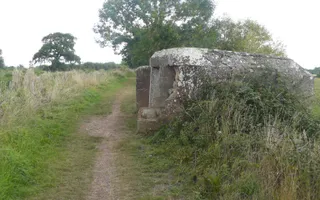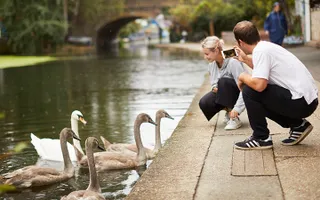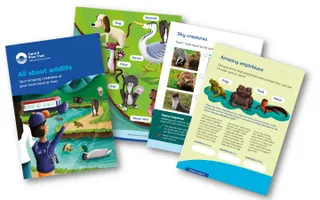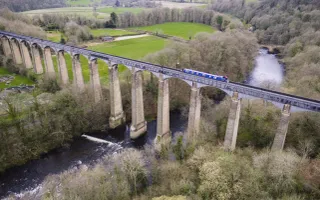So, walking along, you’ve got gorgeous canal on this side, and on the opposite side, something which people could walk past and think, “Oh, it looks a bit messy.” And I’d always argue the messier, the better. Because this is scrubland, is so great and it’s so biodiverse, and we need a bit of mess sometimes in our gardens and things, don’t we?
Yeah, scrubland is a habitat that people often don’t really think of as a habitat because it’s just sort of an untidy area where we’ve let nature do its own thing. After the storms, some branches have come down so we’ve left them there. And then the wood decay beetles will come in, start foraging on them, lay their eggs in there, which will then feed on the dead decaying wood, which is then also absorbed and broken down by fungi, which are just incredible.
Yeah, I feel like in this country, you know, and elsewhere, I mean, we are just obsessed with having manicured lawns, neat and tidy everything. You know, but actually just letting an area grow wild has such catastrophic impact for biodiversity. It makes the world of difference; it gives something a home. So, you know, a place that might seem messy for us actually is critically important when it comes to climate as well.
Absolutely, and those dense brambles that will provide blackberries in the autumn for us and for the birds, but through the summer, it’s going to be one of the first things that’s going to be suitable for birds to get into and build their nests and feel protected from predators. So, we don’t want to chop all of the bramble down. It’s really important to, in appropriate places, let it do its own thing.
Yeah, we’ve got over 100 species of bramble in the UK.
Have we? 100? That’s awesome.
That’s pretty cool. I think it’s 108, but I’d have to check that statistic, but how good? And I love bramble picking, you know, going out and picking blackberries and stuff. You know, it doesn’t get much better than that. And you know, for us and for everything else, it’s just, you know, hands off for a time being.
Yeah.
And it’s brilliant.
The other species that’s really important in scrubland, and we’ve got some here, is ivy. It’s one of the first things to provide pollen and nectar for insects in the spring. One of the last things in the autumn. And also, it’s got a lovely dense structure for birds to build their nests in and be hidden away from predators. So, we should leave ivy standing rather than tidying it away.
I think there’s something we can all take away from that, you know, whether that’s in our gardens or communities or just going out and about in the countryside and seeing areas that look a bit messy but appreciating it for the biodiverse, rich habitat that it is.
Yeah, absolutely.











